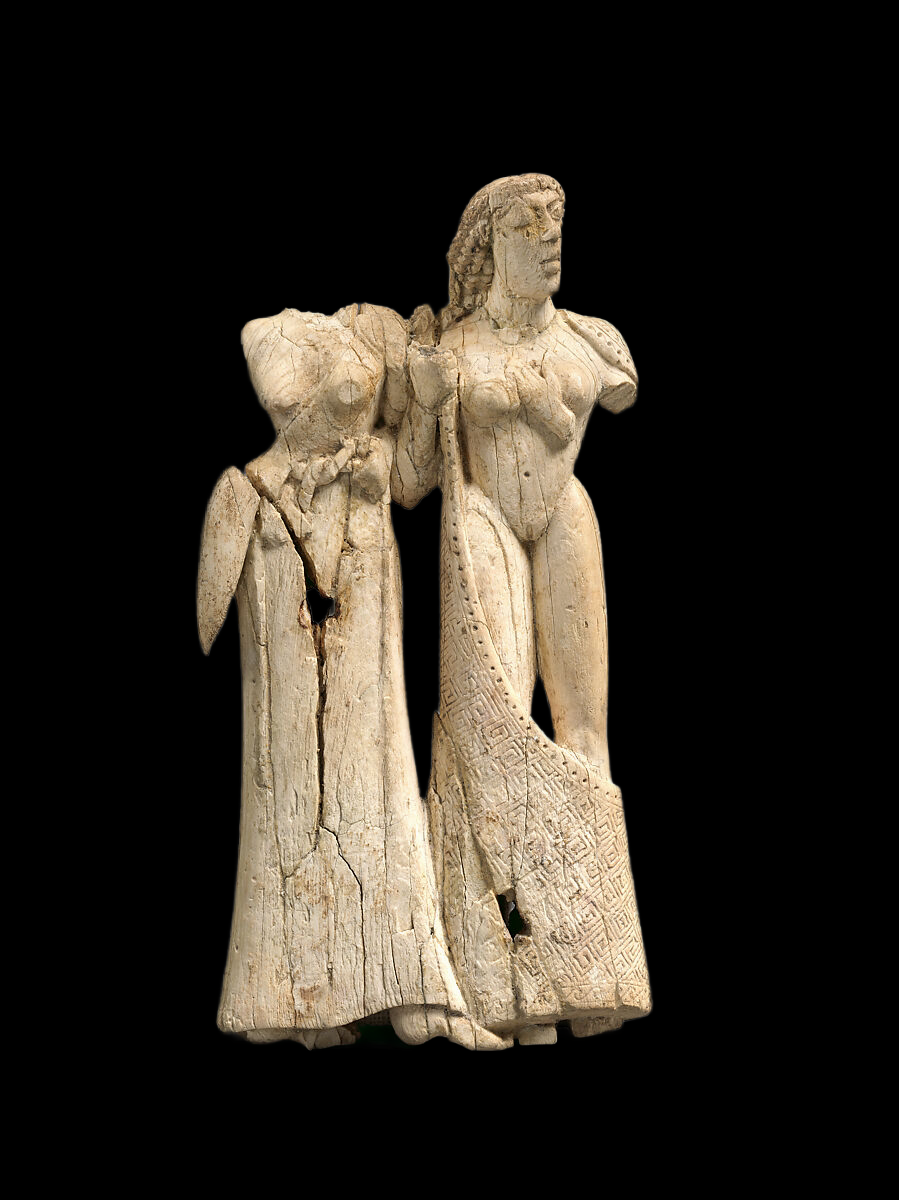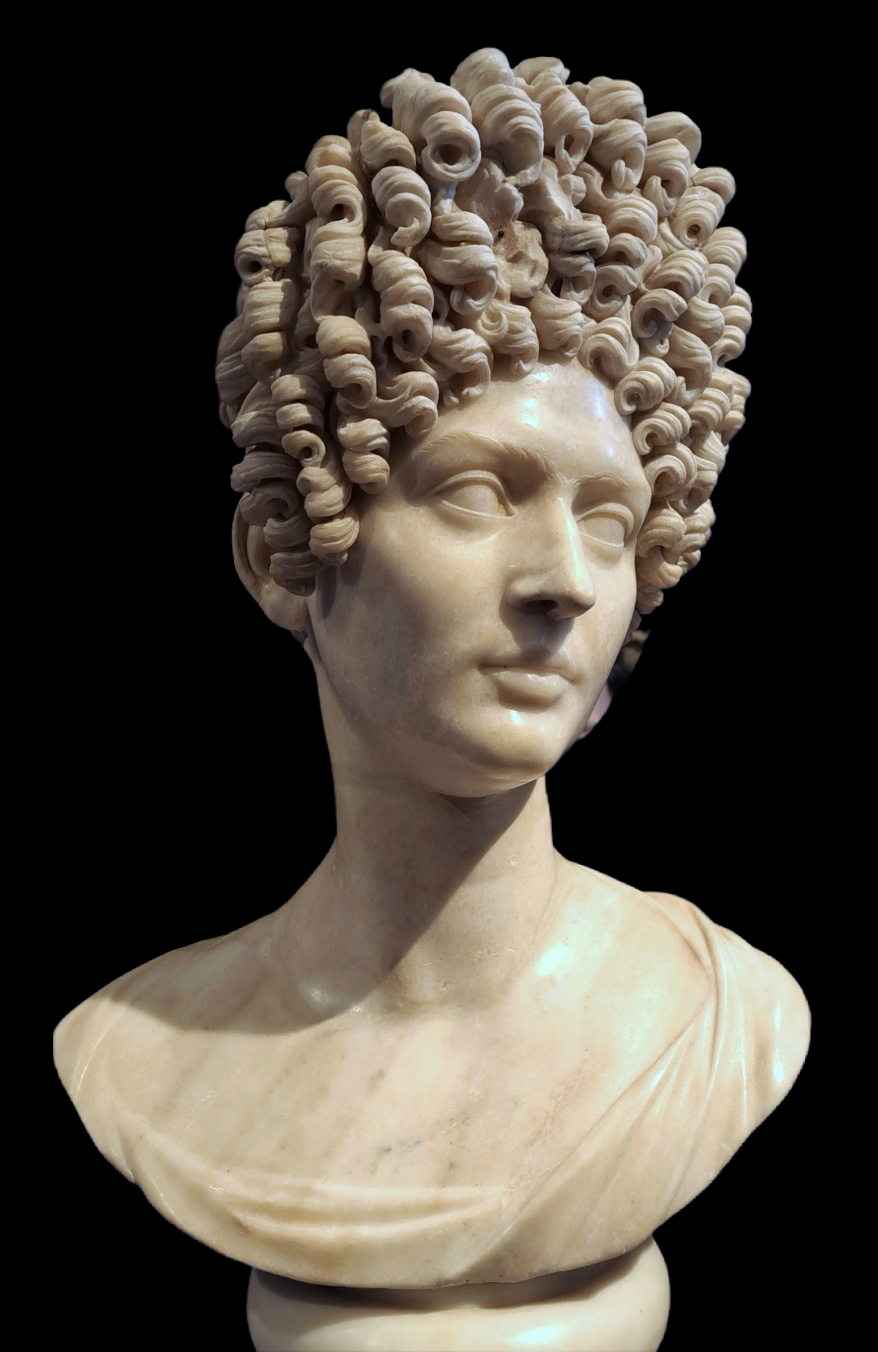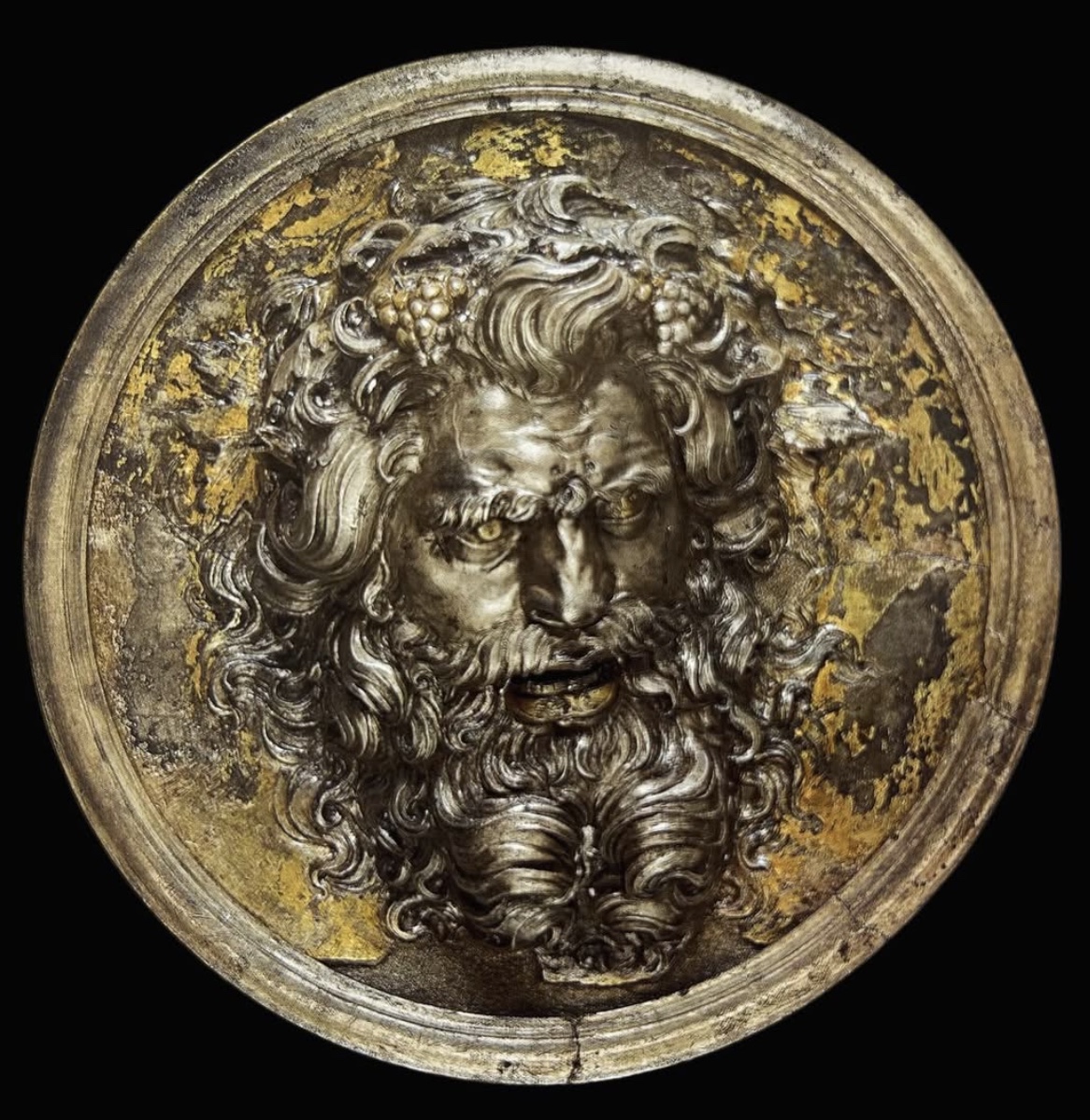When faced with iconographical remnants divorced from any context that could give a hint at original narrative meaning, classicists face a conundrum: to play the ‘fit that myth’ game, or accept our frustratingly fragmentary understanding of the ancient world.
Case in point: this weird ivory plaque (13.6 cm tall) dating to the late 7th century B.C. and formerly in the collection of J.P. Morgan before entering the Met’s super collection. Two standing women are shown. The rich garment nearly entirely slipped off the woman to the right, revealing her nude body beneath, as her companion fiddles with the fastening of her own dress…perhaps disrobing as well.
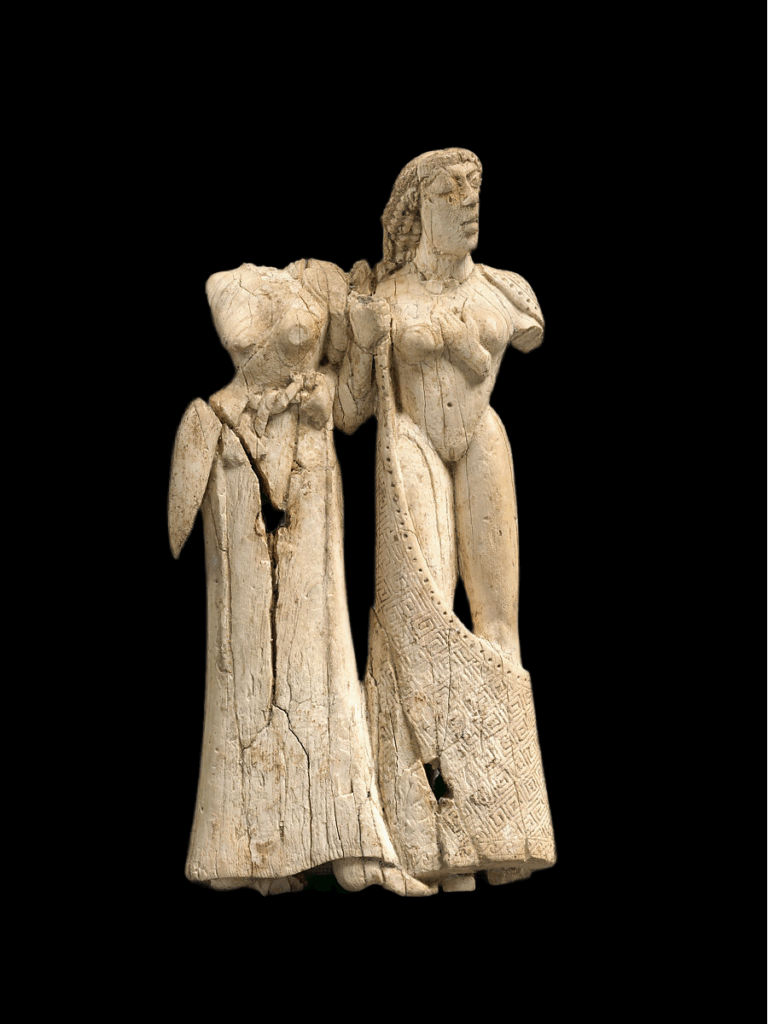
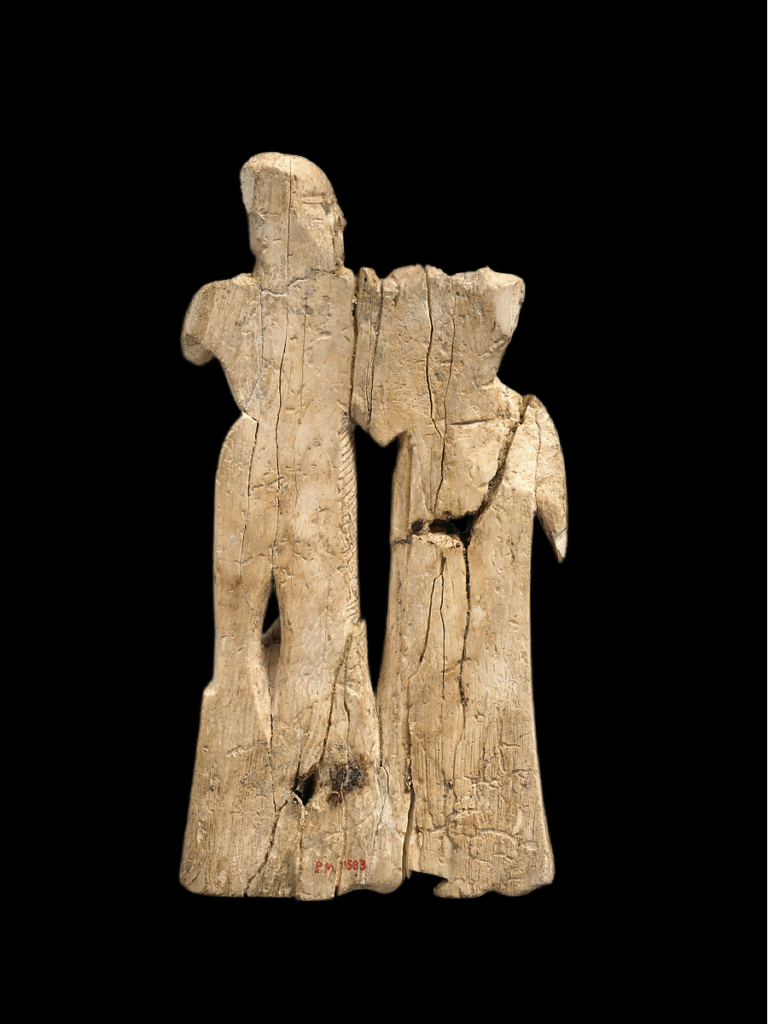
Female nudity was pretty unusual until the late Classical period (and even then reserved for Aphrodite and her ilk), and the perceived wantonness in this most luxurious material is deeply weird.
Curators have opted to associate it with a fairly obscure mythological vignette, and they might very well be right. When young Dionysos was winning over a skeptical Greek populace, he encountered resistance from the Argive King Proitos and in retaliation infected his daughters with madness…thus afflicted the princesses frolicked in the nude, lowed like cattle, and sporadically harassed shepherds.
In terms of matching myth with weird iconography, it’s admittedly pretty good fit – with the Eastern associations of the ivory perhaps even strengthening potential Dionysian connotations. What do you make of such mythological matching? Overreaching academic navel-gazing or ingenious interpretation ?

